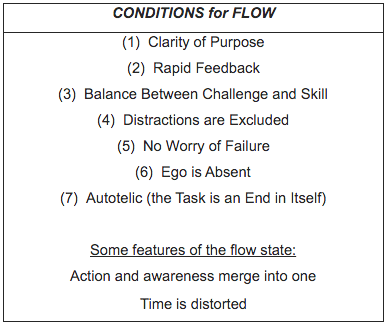The Circumstances for Creativity to Blossom
Episode #7 of the course “Creating creation companies” by Barry Mapp
Now we are going to move away from our focus on the organization and consider the characteristics of a ‘creative’ person and under what circumstances creativity happens.
If we look at research about how and when people are creative, we will understand why the working conditions of the creation company promote creativity and can lead to extraordinary results. We will also see why the working conditions of the compliance company sabotage creativity. So what type of person produces creative ideas?
Well, we can all be creative, and we can all learn to become more creative.
What do we know about people who produce really big creative ideas?
In a landmark study, Csikszentmihalyi looked at the personality characteristics of 91 exceptional people (each of whom had made a difference to a major domain of culture). What he found was that creative people had complex personalities. So if the question was, “Are they introverted or extraverted?” the answer was that they were both (this, of course, also has implications for the old science personality questionnaire that assumes an either/or approach to personality).
What Csikszentmihalyi found was that creative people could be both energetic and restful, smart and naïve, playful and disciplined, fantasy-oriented and reality-grounded, extroverted and introverted, humble and proud, masculine and feminine, conservative and rebellious, passionate and objective, and could “suffer” yet profoundly enjoy what they did.
This research confirms that for creativity to blossom in the workplace, we must value complex personalities and not expect people to fit into neat boxes. Indeed, we need to allow people to be themselves and honor the uniqueness in everyone.
Under what circumstances do creative ideas happen?
Here I will touch upon the work of Herbert Benson and further explore Csikszentmihalyi’s earlier work on the psychology of happiness, where he coined the word “flow” (others refer to this as “being in the zone”). Flow is a state of relaxed focus attention that can achieve extraordinary results with minimal effort. Csikszentmihalyi was able to link the conditions for flow to the conditions for creativity. The following table shows the seven conditions for “flow” to occur:
In the compliance company, many things are happening to prevent “flow.” For example, arbitrary targets destroy clarity of purpose (1). Annual appraisal is the antithesis of rapid feedback (2). Setting challenges to achieve targets without providing a method (skill) to do so upsets the balance between challenge and skill (3). Supervision and having “activity” measured together with the setting of arbitrary targets provides major distractions to the flow state (4). A blame culture in the organization sabotages (5) and (6). And finally, extrinsic rewards sabotage the autotelic nature of a task (7).
The relaxation response (requiring activation of the parasympathetic nervous system) is a prerequisite for “flow.” Herbert Benson’s early research work was on the relaxation response, and he was the first western doctor/scientist to study the heart rate-lowering abilities of eastern yogis. His more recent work has been on what he calls the “breakout principle.” What happens when people get their ah-ha moments and make a breakthrough with their thinking? Benson showed that in most cases, there is first a period of intense mental struggle with a task. (Activity and task merge, much like Csikszentmihalyi’s “flow.”) Then, there is a period of release, of deep relaxation, and this release leads to the breakout point (or “peak experience”). Benson then demonstrated that under these conditions, the brain produces “puffs” of nitric oxide. The physicist Danah Zohar has shown that these ah-ha moments are associated with the production of coherent brain waves that oscillate at a frequency of 40 hertz.
Recommended book
“Flow: The Psychology of Optimal Experience” by Mihaly Csikszentmihalyi
Share with friends


